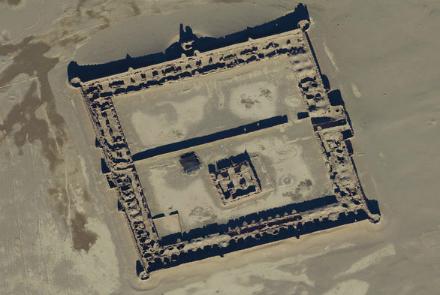Researchers are using drones to identify archaeological sites across Afghanistan that external forces like the Taliban have made impossible to safely visit in person, according to a report by Science.
These span roughly two millennia and include everything from massive shelters for caravan travelers to ancient canal systems, according to the report.
The Afghan Heritage Mapping Partnership is a collaboration between US and Afghan researchers who are poring over data gathered through a combination of commercial satellites, US spy satellites and military drones.
It received a $2 million grant from the United States State Department in 2015, and will continue through 2018, according to the University of Chicago, whose researchers comprise the American side of the collaboration.
They have more than tripled Afghanistan’s catalog of known archaeological features and bringing the number above 4,500.
“The capability to explore a relatively little known region efficiently and safely is really exciting,” David Thomas, an archaeologist at La Trobe University in Melbourne, Australia, who is not a member of the mapping team, told Science. “I’d expect tens of thousands of archaeological sites to be discovered. Only when these sites are recorded can they be studied and protected.”
The discoveries have included 119 football field-sized caravanserais – lodging for those traveling by camel caravan – which extend across the country’s southern deserts in roughly 12-mile intervals, according to Science. Emily Boak, a Chicago heritage analyst, told Science that the caravans once transported precious goods like silk, gems and spices from India and even porcelain from China.
Previously, Boak told Science, many researchers assumed the Safavid Empire—the early Iranian dynasty whose reach included Afghanistan – had faded by the 16th and early 17th centuries.
The scale and planning that went into constructing the caravanserais from that time suggests it may have actually been thriving.
“There is a long-standing view that once the Portuguese entered the Indian Ocean [in the 16th century] no one bothered to cross Central Asia,” project manager Kathryn Franklin, an archaeologist at the University of Chicago, told Science. “But this shows a huge infrastructure investment of the Safavids a century later.”
The use of American drones in the Middle East for the purpose of scientific preservation is a welcome change. The Taliban has also historically pursued an agenda of destroying valuable archaeological features, as outlets like NBC have reported.
In an unexpectedly touching detail, Science noted that the project has proved so compelling that archaeologists in their 80s have been coming out of retirement in order to help.


